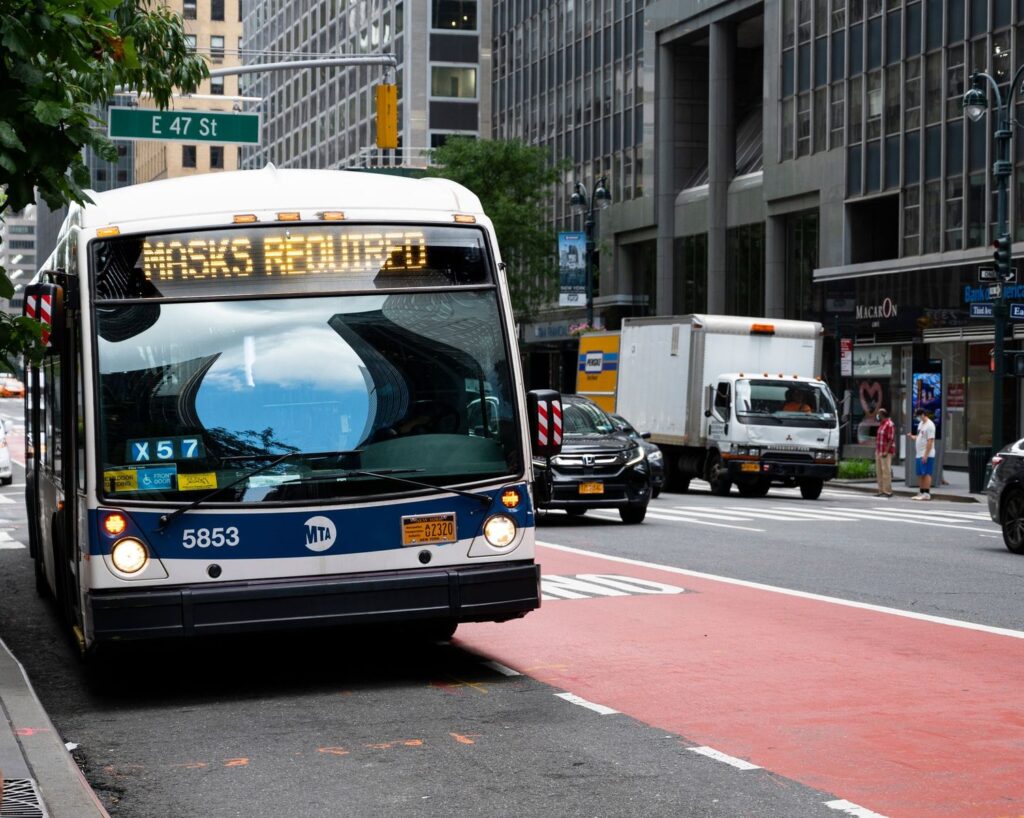Vehicle location technologies are becoming more enhanced in terms of their use and performance. In public transit contexts, these technologies are increasingly being utilized for applications other than location monitoring and schedule tracking. Automatic voice announcements are among those applications in which AVL (automatic vehicle location) technologies are being integrated, and Transign is one of the best providers of automatic programmable voice announcement system integrations and solutions for different kinds of transit systems.
A voice announcement system is critical for compliance with the ADA (Americans with Disabilities Act), which requires passenger systems to provide a safe and inclusive means of transportation for all—especially for people with disabilities.
As public transit usage increases, leveraging technological advances should be part of a transit provider’s on-going strategy. This is important especially in this day and age of heavy reliance on electronic and digital integration.
The advancing transit industry is now requiring automated voice announcements on their vehicles along with complete integration and implementation of more robust passenger information systems. More recent technologies arm these passenger information systems with even greater processing power and substantial memory storage, which renders them capable of so much more than simple voice announcements.
Investments in automated vehicle location technologies are being increasingly utilized, not only for monitoring vehicle locations and schedule information, but also for providing passengers critical information that they require while in transit, including voice announcements regarding stops and transfers, public service and safety information, points of interest, and even promotions. All of these open up a great channel for revenue, especially with the increasing number of public transit users today.
Integrated voice announcement systems allow transit providers and authorities to initiate location-specific and relevant announcements for public transit users and passengers. These systems help authorities and providers relay critical information about their journey, ranging from current stops and locations to approaching stops or transfers, as well as alerts and warnings on potential delays in the transit schedule. On-board voice announcements are extremely useful in many public transportation applications, especially when it comes to mass transit.
Automatic programmable voice announcement systems come in many forms and sizes, including systems that can be fully integrated with vehicle location systems (GPS) for better fleet control and monitoring. As a matter of fact, one of the best uses and applications for AVL systems is integration of automatic voice announcement systems that allow transit operators a way to easily dispatch internal and external announcements while fleets are in transit—and right at each stop where these announcements matter the most. These systems are also critical investments to ensure compliance with ADA requirements, which help make sure that passengers with disabilities are properly and considerately served by public transit providers.
How it will help disabled people
Knowing where the bus stops, identifying bus routes, knowing the waiting times at bus stops - use of public transportation demands having access to information at every step of the journey. The task is far more complicated for people living with a disability - whether motor, sensory or intellectual.
The Americans with Disabilities Act (ADA) requires all transportation companies to announce stops and identify bus routes at stops serving more than one route. Our passenger information systems make life easier for riders with disabilities, enabling them to receive all the critical information about their journey without having to rely on paratransit.
Transign is the leader in ADA-compliant passenger information solutions. Our solutions are fully ADA compliant and can be integrated into pull cord or button activation designs or to most third-party software systems. Our systems support a wide range of installation types, viewing angles, and languages.
Where to get this system?
Tell us about your needs, and we will find the solution that best fits your budget and requirements.
Is customer service available?
Yes, we are committed to offering reliable technical support to our clients. Please call us at the following numbers, and we will ensure that you receive immediate assistance:
Toll-Free: (855) 535-7446
Tel: (248) 623-6400
Fax: (248) 623-2930
You can also leave a message using the ‘Contact a Specialist’ form on this website.
Any Warranty for this system?
Yes, we stand behind all of our products with a Limited Lifetime Warranty. All products are backed with excellent customer service and our Rapid Return Guarantee.




 Transign is the leader in ADA-compliant passenger information solutions.
Transign is the leader in ADA-compliant passenger information solutions.









